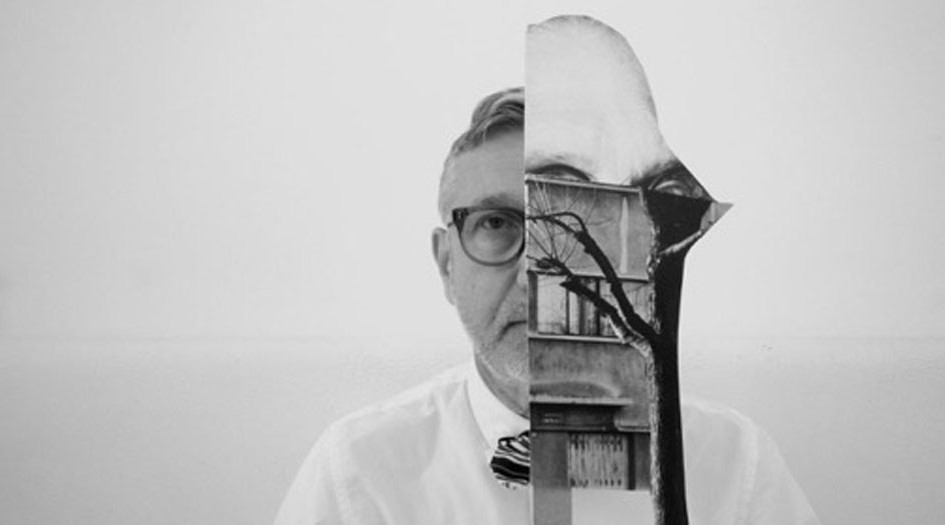Ukrainian-born artist Sergei Sviatchenko’s collage practice has spanned three decades, overcoming a period of tumultuous change in both how we consume and create images. The appropriately titled, Collages (his first release that focusses exclusively on the medium), provides a comprehensive overview of Sergei’s collage work and is curated and features an extended essay by renowned art and design commentator Rick Poynor. We spoke with Sergei on working with Poyner, the resurgence of collage and how his practice has changed with the advent of new technologies over the last thirty years.
What first sparked your interest in Collage?
I’d say Constructivists, particularly Aleksandr Rodchenko: the way he used elements at greatly varied scale and left a lot of negative space in his images left an impression on me. I was also paying attention to Surrealists, artists like Ernst, Dalí, Tanguy, Magritte, Delvaux and De Chirico.Especially Dalí’s paintings such as Dream Caused by the Flight of a Bee around a Pomegranate a Second before Awakening (1944) and The First Days of Spring (1929), where the figures are scattered across a blank grey landscape. What I liked most was the non-logical connection of disconnected elements or stories, I would call it a shift, or slip, or dislocation. There is a possibility for the intellectual comprehension of the seen in collage, leaving me to focus more on emotions in my paintings.
How did you select the published works in Collages? To what level was Rick Poynor involved?
Rick came from London for a few days in February 2014 and it was a wonderful time for me. Partly because I had to go through my archive of images and partly because of Rick’s knowledge about the world of image making and his interest in my work. He was not only selecting the works, defining the structure of chapters and writing the extended essay, but also checking the proofs. He was very hands-on throughout the project. Knowing the number of books he has worked on and the quality of his output, I felt safe in his hands. As a bonus, he also filled in the gaps in my knowledge about rock music because it’s patchy availability outside the Soviet Union during the Communist years.
At what point did you see a resurgence of interest in your collage practice?
I have been working with collage for more than 30 years now and have gone through a few different approaches, experimenting with different ways of filling the composition, limiting myself to fewer elements and ripping them out, or up off, the ground – so to speak – by placing the finished compositions on simple colourful backgrounds. Sometimes I’ve felt like I was the only one working like this – I liken it to a dangerous feeling of superiority. It was when my works were selected in 2011 for Cut&Paste, 21st Century Collage by Laurence King Publishing and Cutting Edges, Contemporary Collage by Gestalten that I realised how many artists use collage for their expression. Although I don’t like the term “collage artist” – I am an artist.
What do you think brought about this revived interest?
Visual impressions play an important part in our communication today and as an audience we’re more aware of the role images play in society. I think my work can sometimes spark in the viewer a [feeling of a] half-remembered dream.
Has having access to a wealth of imagery online changed your practice in anyway?
Not my practice, as my work is very old-fashioned and I have originals of almost every collage. The elements I use are in very modest folders and boxes which I prepare by going through a pile of magazines or auctions catalogues rather unconsciously hoping to use them later. I also have a habit of printing A4 or A3 versions of my photographs and then making cut offs almost knowing which part will go where. Even when I go on holiday I have a few folders with me. Needless to say I enjoy making collages.
One of your most recent series Slept On The Top Of the Eiffel Tower seems to merge aspects of both your collage and painting practices. Can we expect to see more of this kind of work moving forward?
Yes, I like the lightness and ease of how it happened, it was a natural continuation of my differing practices: the emotional process in painting vs. the intellectual comprehension as seen in collage. I also wanted to experiment with different structure and scale, because the surfaces are painted and the works are rather large at 170 x130 cm. I am looking forward to seeing how they will look together in one show.
Collages by Rick Poyner is published by SCHLEBRÜGGE and is available now. Purchase here or here

